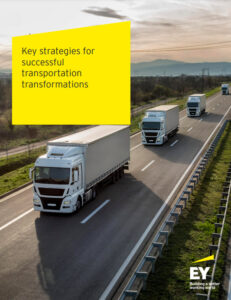
Introduction
Transportation tragedies, ranging from accidents on highways to maritime disasters, pose significant risks to public safety and economic stability. In this article, we delve into the importance of preventing such tragedies and explore effective strategies to mitigate risks and enhance safety across various modes of transportation.
Understanding Transportation Tragedies
Transportation tragedies encompass a wide range of incidents, including road accidents, aviation disasters, railway collisions, and maritime emergencies. These events result in loss of life, injuries, property damage, and environmental hazards. Understanding the root causes and dynamics of transportation tragedies is crucial for developing preventive measures.
Common Causes of Transportation Tragedies
Human error, mechanical failures, adverse weather conditions, and inadequate infrastructure are among the primary causes of transportation tragedies. These factors often interact in complex ways, leading to catastrophic outcomes. Identifying and addressing these underlying causes are essential steps in preventing future incidents.
Impact of Transportation Tragedies
The consequences of transportation tragedies extend beyond immediate casualties and damages. They disrupt supply chains, strain emergency response systems, and impose long-term socio-economic costs on affected communities. Additionally, survivors and their families may experience trauma and psychological distress.
Crafting Prevention Strategies
Preventing transportation tragedies requires a multi-faceted approach that encompasses regulatory measures, technological innovations, education initiatives, and community engagement efforts. By addressing vulnerabilities at various levels, stakeholders can reduce the likelihood and severity of accidents.
Role of Government and Regulatory Bodies
Governments play a critical role in setting and enforcing safety standards for transportation systems. Regulatory bodies conduct inspections, investigations, and audits to ensure compliance with established regulations. Collaboration between government agencies, industry stakeholders, and advocacy groups is essential for effective oversight and governance.
Importance of Technology in Prevention
Advancements in technology offer promising solutions for enhancing transportation safety. From collision avoidance systems to real-time monitoring tools, innovations such as artificial intelligence (AI), Internet of Things (IoT), and predictive analytics can help identify risks and prevent accidents before they occur.
Community Engagement and Awareness
Building a culture of safety requires active participation from the community. Public awareness campaigns, educational programs, and grassroots initiatives can promote responsible behavior among drivers, pedestrians, and other road users. Empowering individuals to recognize and report safety hazards fosters a sense of collective responsibility.
Corporate Responsibility
Companies have a duty to prioritize safety in their operations. Investing in maintenance, training, and employee wellness programs can mitigate risks and improve overall safety performance. Transparent communication and accountability mechanisms build trust with customers and regulators.
International Cooperation and Best Practices
Given the global nature of transportation networks, collaboration between countries is essential for addressing common challenges and sharing best practices. International organizations facilitate knowledge exchange, harmonize safety standards, and coordinate emergency responses to major incidents.
Case Studies of Successful Prevention Efforts
Examining past incidents and effective interventions provides valuable insights for future planning. Case studies highlight the importance of proactive measures, such as implementing safety protocols, leveraging technology, and fostering a culture of continuous improvement.
Challenges in Implementation
Despite the potential benefits, implementing prevention strategies faces various obstacles, including resistance to change, resource constraints, and competing priorities. Overcoming these challenges requires leadership, innovation, and sustained commitment from all stakeholders.
Future Directions in Transportation Safety
Looking ahead, emerging technologies and evolving regulatory frameworks will shape the future of transportation safety. From autonomous vehicles to sustainable infrastructure, opportunities abound for enhancing resilience and reducing risks in a rapidly changing world.
Conclusion
Preventing transportation tragedies is a collective responsibility that requires concerted efforts from governments, businesses, communities, and individuals. By adopting proactive strategies, leveraging technology, and fostering collaboration, we can create safer and more resilient transportation systems for future generations.
For more tech content like this VisitIT and Tech:https://www.info-tech.online/
BANKING, ACCOUNTING, INSURANCE AND FINANCIAL SERVICES:https://www.finance-tech.online/
HEALTHCARE AND PHARMACEUTICALS:https://www.healthcare-tech.online/
TRANSPORTATION AND LOGISTICS:https://www.transport-tech.online/
ENTERTAINMENT, TRAVEL AND HOSPITALITY:https://www.entertainment-tech.online/
MARKETING, ADVERTISING AND PUBLIC RELATIONS:https://www.channel-tech.online/
HUMAN RESOURCES COMPENSATION AND BENEFITS:https://www.humanresources-tech.online/
MECHANICAL AND CIVIL ENGINEERING:https://www.engineering-tech.online/
MANUFACTURING AND CONSTRUCTION:https://www.manufact-tech.online/
NON-PROFIT AND NON-GOVERNMENT ORGANIZATIONS:https://www.nonprofit-tech.online/
Want to promote your content?
Visit:https://www.exellius.com/contact-us/ orhttps://www.mediamartech.com/contact-us/c








